Techtones
Auckland’s music community was going through a major transition in 1980. Emerging from the healthy (if you could call it that) punk scene, it seemed like every week there was a band replacing their safety pins with snappy suits in the manner of England’s “new wave” of popsters. One of the more promising and high-profile at the time, but strangely forgotten since, was Techtones.
Techtones was essentially a re-invention of very popular but rapidly disintegrating five-piece, Sheerlux. In early 1980, bassist Peter Solomon joined Sheerlux’s remaining members Steve Roach (guitar/vocals), Jimmy Juricevich (guitar/vocals) and Graeme Schnell (drums) for the band’s last gasp. A few weeks later Schnell had left, and Chris Burt was recruited from hard-working covers outfit Picture This. “I thought I was joining Sheerlux,” Burt recalls. “Picture This was also falling apart, so it seemed like a great offer.”
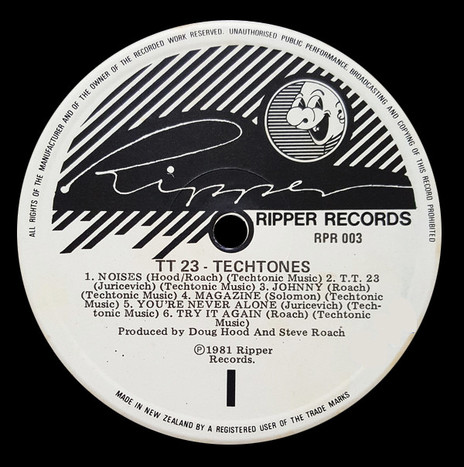
Side one album label, Techtones - TT23 (Ripper, 1981)
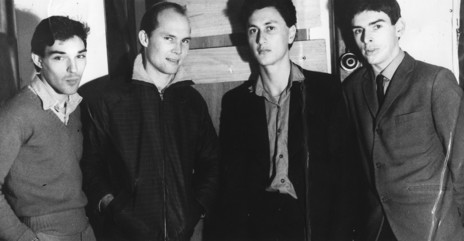
Techtones – Chris Burt, Steve Roach, Peter Solomon, Jimmy Juricevich.
Photo credit:
Steve Roach collection
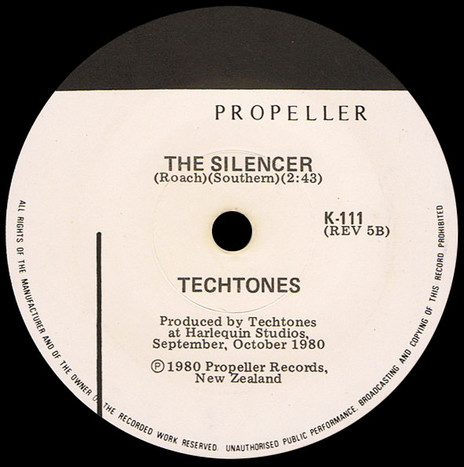
Techtones - The Silencer (Propeller, 1980)
Photo credit:
Design by Peter Urlich.
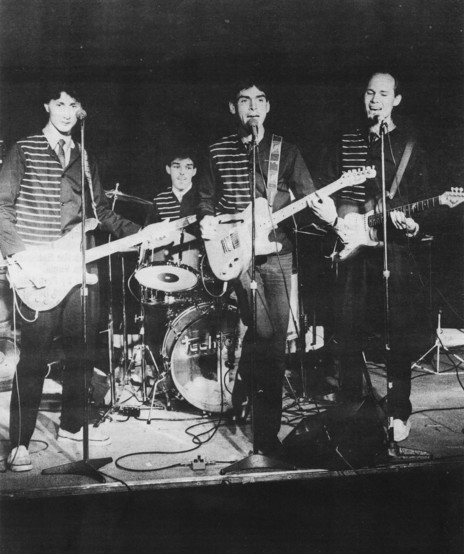
Techtones, Rip It Up Extra, December 1980.
Photo credit:
Murray Cammick
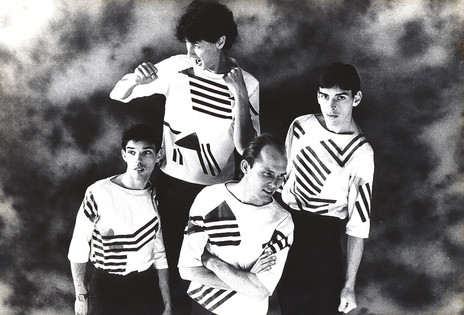
Techtones posing for a publicity photo, in costumes designed by Ngila Dickson. Clockwise from left: Jimmy Juricevich, Peter Solomon, Chris Burt, Steve Roach.
Photo credit:
Steve Roach collection
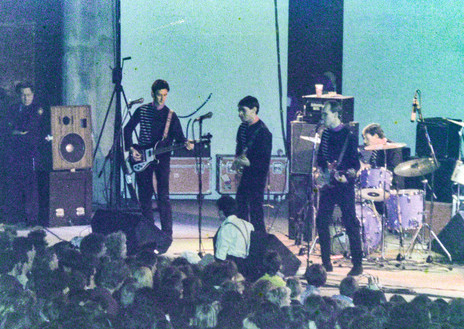
Techtones onstage at Logan Campbell Centre, Auckland, supporting the B52s.
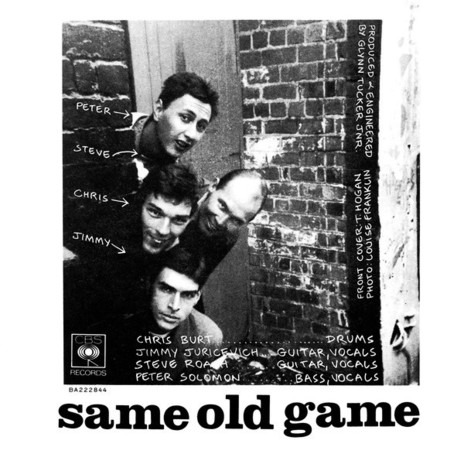
Techtones, Same Old Game, the B-side of State of Mind (CBS, 1981). Produced by Glyn Tucker, group photo by Louise Franklin.
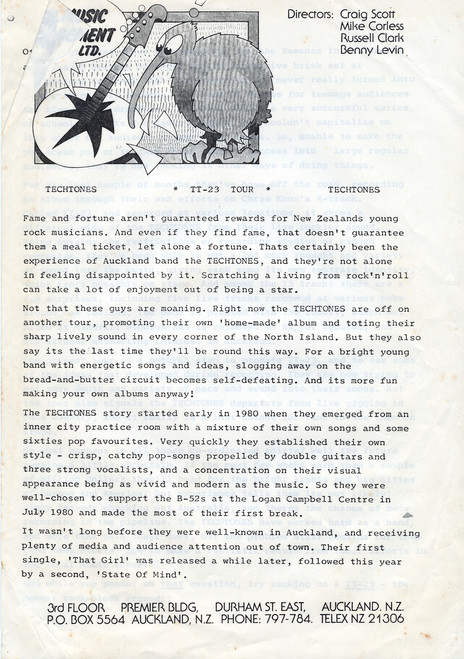
First page of a two-page press release on the Techtones from New Music Management, promoting their album and tour.
Photo credit:
Steve Roach collection
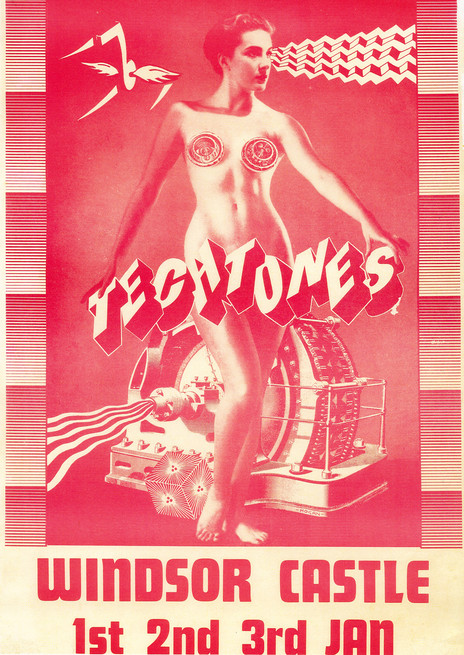
Techtones at the Windsor Castle, January 1981, design by Terence Hogan.
Photo credit:
Steve Roach collection
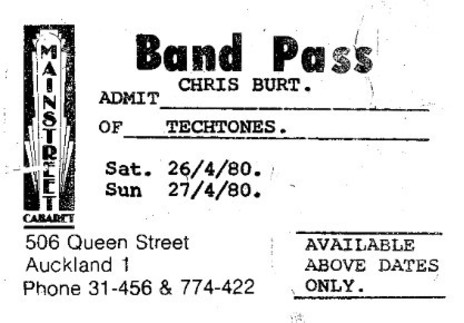
Mainstreet band pass for Chris Burt of Techtones, April 1980.
Photo credit:
Chris Burt collection
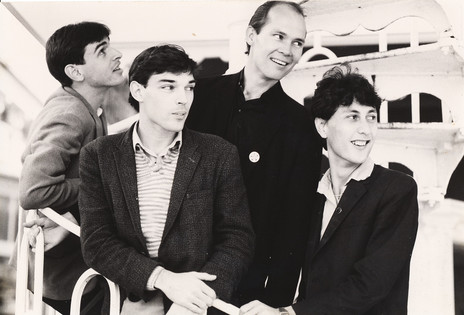
Techtones, from left to right: Jimmy Juricevich, Chris Burt, Steve Roach, Peter Solomon.
Photo credit:
Steve Roach collection
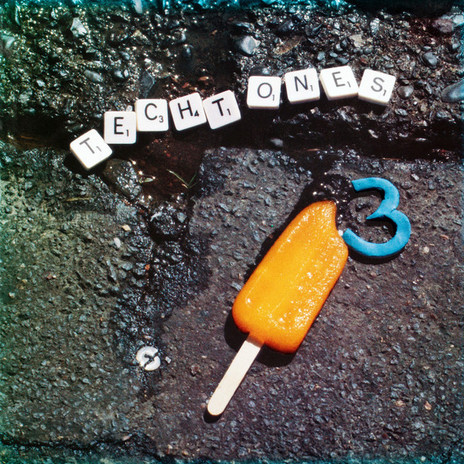
Techtones - TT23 album cover (Ripper, 1981)
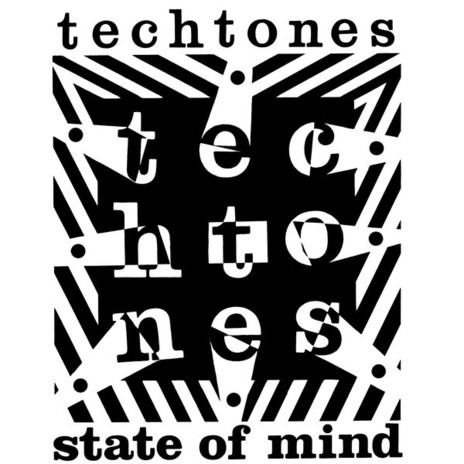
Techtones - State Of Mind (CBS, 1981). Cover art by Terence Hogan.
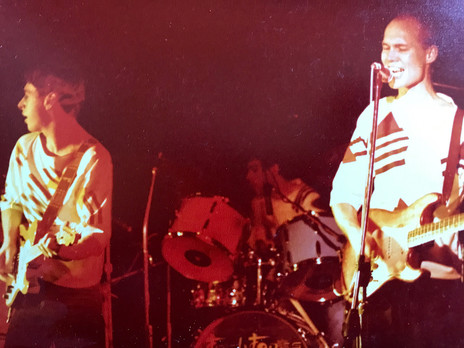
Techtones (L-R): Jimmy Juricevich, Chris Burt (drums), and Steve Roach.
Photo credit:
Simon Burt collection
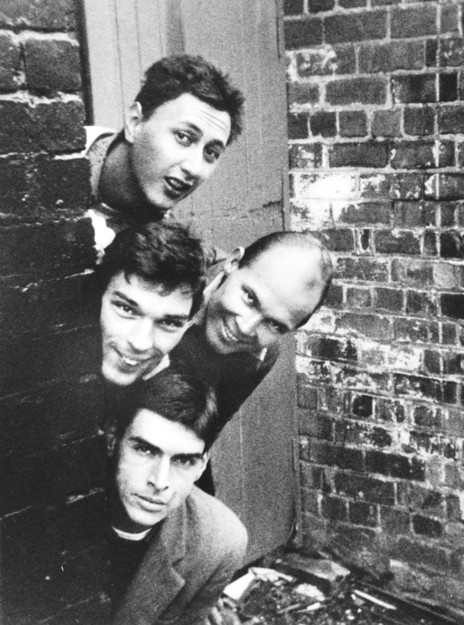
Techtones. Peter Solomon (top), Chris Burt and Steve Roach (middle), Jimmy Juricevich (bottom).
Photo credit:
Steve Roach collection. Photo by Louise Franklin.
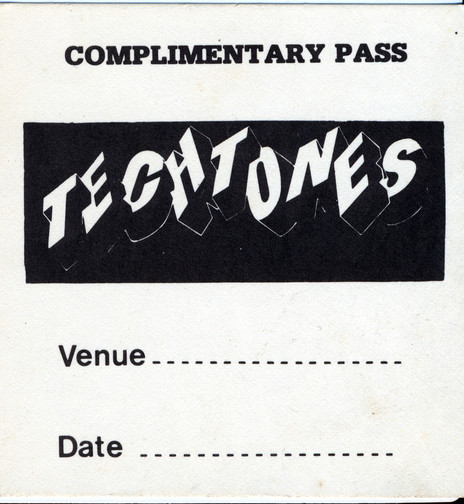
Techtones complimentary pass.
Photo credit:
Steve Roach collection
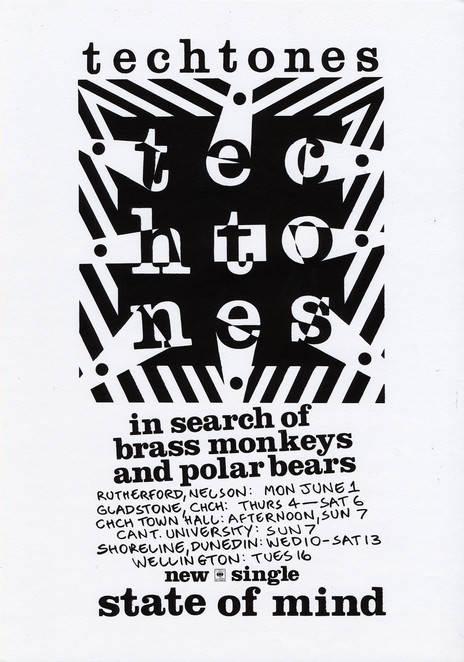
Techtones tour poster, 1981.
Photo credit:
Steve Roach collection
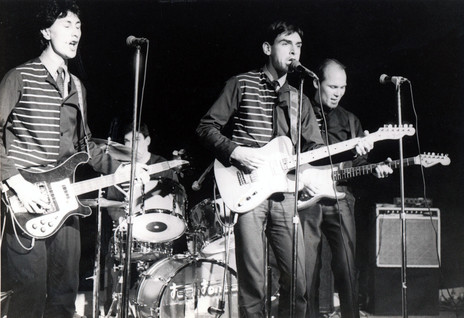
Techtones live, late 1980.
Photo credit:
Steve Roach collection
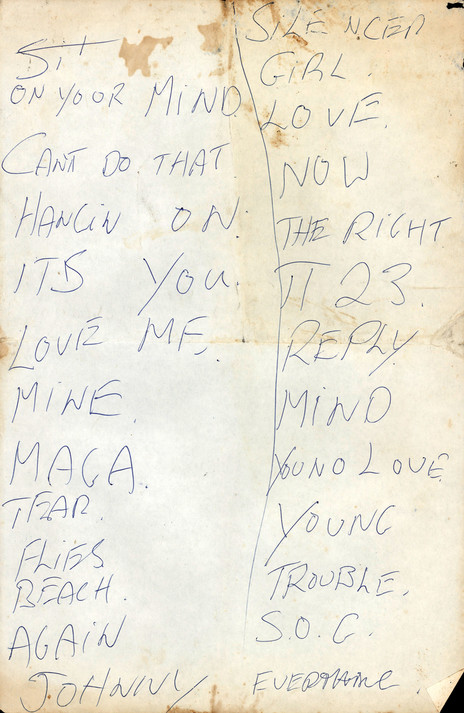
Techtones set list.
Photo credit:
Steve Roach collection
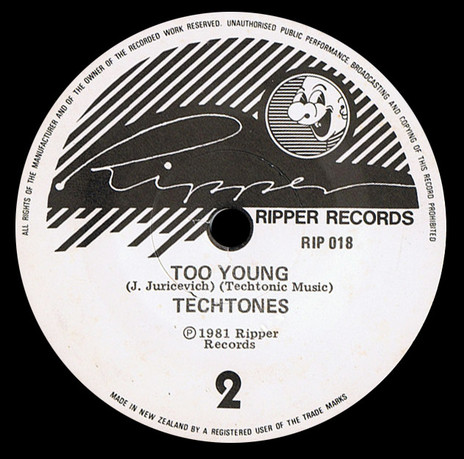
Techtones - Too Young, the B-side to T.T.23 (Ripper, 1981)
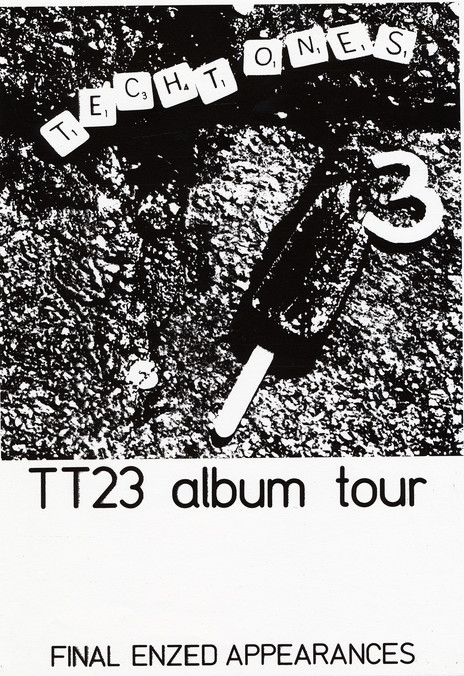
Techtones - TT23 album tour poster, 1981.
Photo credit:
Steve Roach collection
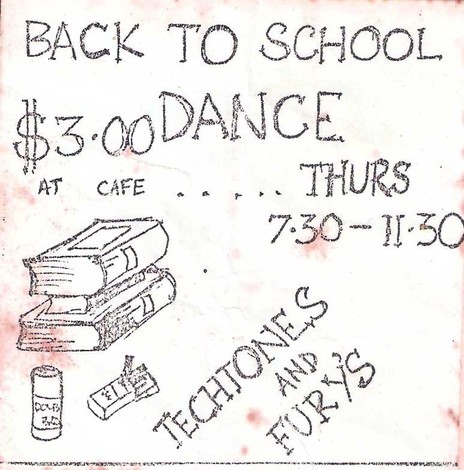
The Furys and Techtones at a school cafe, 1981
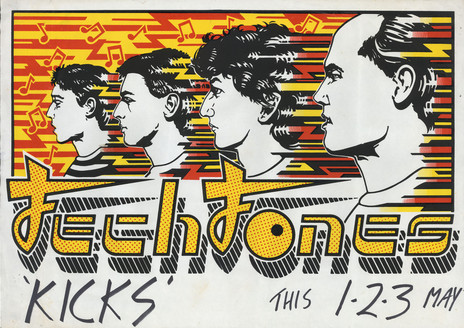
The Techtones, 1980. Poster design by Joe Wylie.
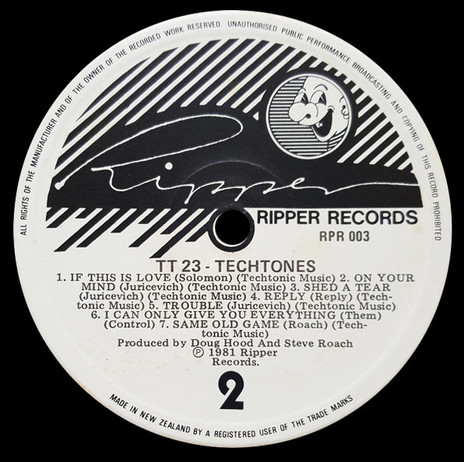
Side 2 label, Techtones - TT23 album (Ripper, 1981)
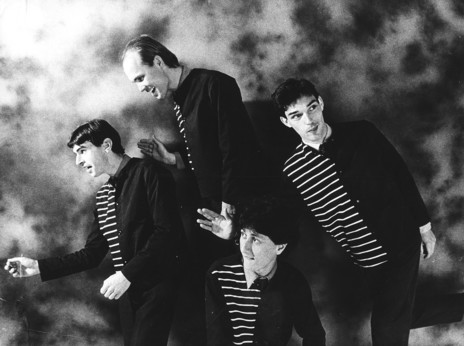
Techtones posing for a publicity photo, wearing costumes designed by Ngila Dickson. Clockwise from left: Jimmy Juricevich, Steve Roach, Chris Burt, Peter Solomon.
Photo credit:
Steve Roach collection
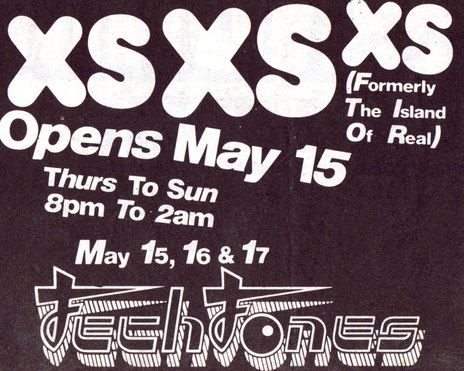
The poster for the opening night at XS
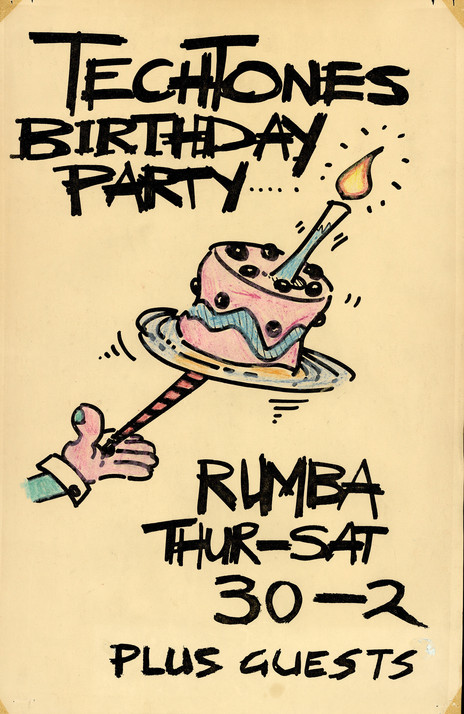
Techtones at the Rumba Bar, 1981.
Photo credit:
Steve Roach collection
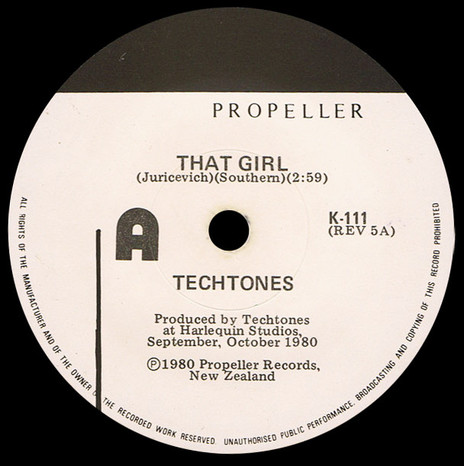
Techtones - That Girl (Propeller, 1980)
Photo credit:
Design by Peter Urlich.
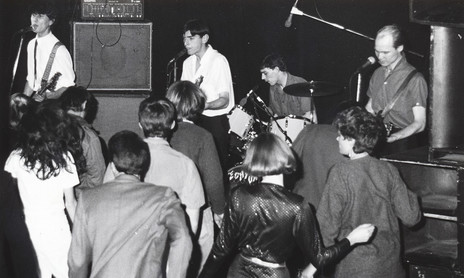
Techtones performing live. Left to right: Peter Solomon, Jimmy Juricevich, Chris Burt, Steve Roach.
Photo credit:
Steve Roach collection
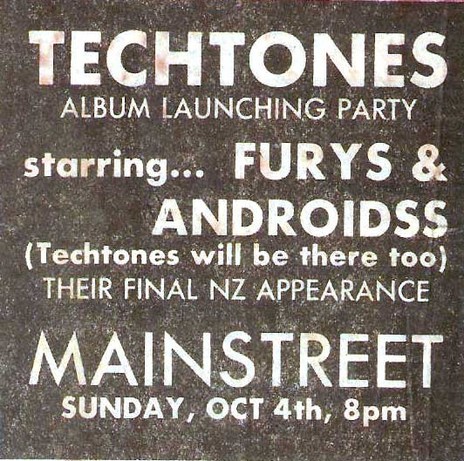
Techtones, Furys and Androidss at Auckland's Mainstreet, 1981
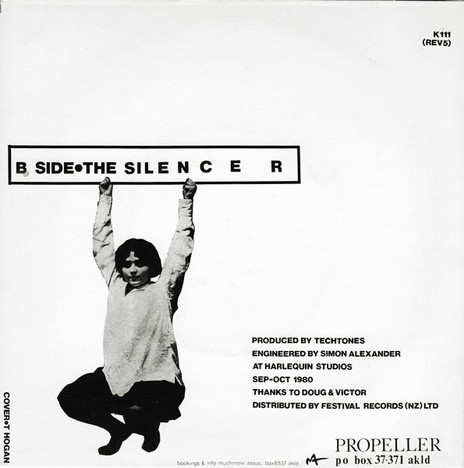
Techtones - back cover to That Girl/ The Silencer (Propeller, 1980)
Photo credit:
Design by Terence Hogan.
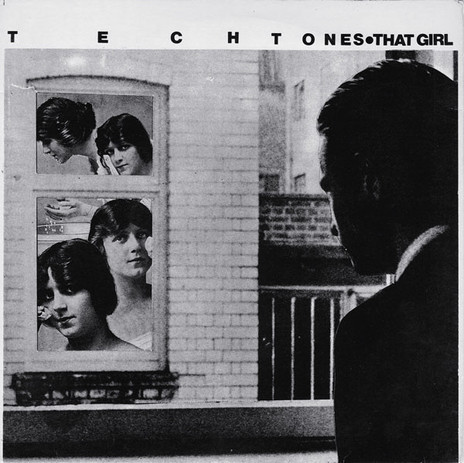
Techtones - That Girl picture sleeve (Propeller, 1980)
Links:
Discography
Members:
Jimmy Juricevich - guitar, vocals
Steve Roach - guitar, vocals
Peter Solomon - bass
Chris Burt - drums